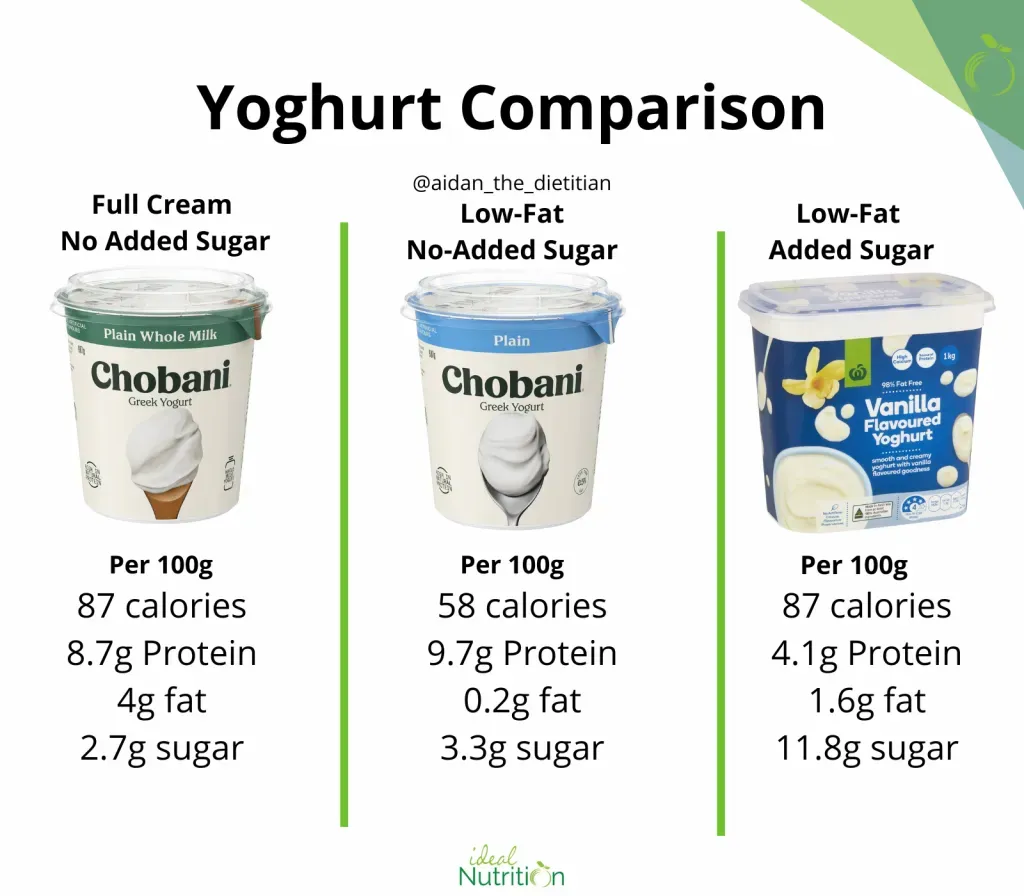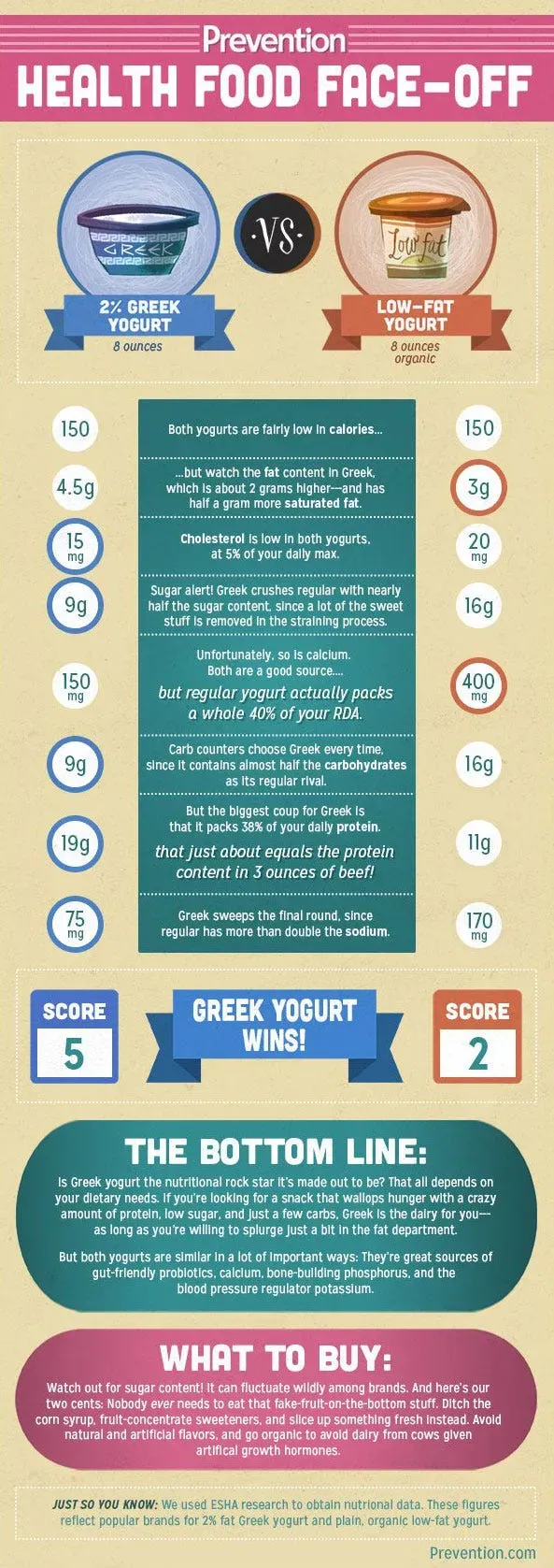Table of Contents
Walk down the dairy aisle and you're hit with options. It's not just flavors anymore; it's fat content. For years, we were told fat was the enemy, pushing everyone toward the "low fat" or "fat free" options. But the conversation has shifted. Now, you hear whispers, sometimes shouts, about the benefits of full fat. So, when you're staring at the shelves, trying to decide betweenlow fat yogurt vs full fat yogurt, what's the real difference? Is one truly better than the other, or is it more complicated than a simple fat percentage? It turns out, there's more to the story than just the grams of fat listed on the label. We need to look past the marketing and dig into what these yogurts actually contain, how they taste and feel, and what role they play in your diet goals. Let's cut through the noise and figure out which carton deserves a spot in your fridge.
Beyond the Fat: What's Really in Low Fat Yogurt vs Full Fat Yogurt?

Beyond the Fat: What's Really in Low Fat Yogurt vs Full Fat Yogurt?
Stripping Away the Fat, Adding What Back?
When you take the fat out of something like yogurt, you fundamentally change its structure and flavor. Think about it: fat carries flavor and contributes to that creamy texture we often crave. So, when manufacturers produce low fat yogurt vs full fat yogurt, they aren't just scooping out the fat and calling it a day. They have to compensate for what's lost. Often, this means adding things back in to make it palatable, to thicken it up, and to give it some semblance of the original mouthfeel. It's not always a simple subtraction; sometimes it's a chemical equation to mimic the real thing.
The Usual Suspects: Thickeners and Stabilizers
To achieve a texture that doesn't resemble watery milk, low-fat yogurts frequently rely on a cast of characters you might not recognize. Gums like carrageenan, locust bean gum, or guar gum are common thickeners. Pectins or modified food starches also show up. These ingredients are generally considered safe, but they are added to create a texture that the natural fat would have provided. It makes you wonder, are you buying yogurt, or a science experiment designed to feel like yogurt?
- Carrageenan: Derived from seaweed, often used as a thickener and emulsifier.
- Locust Bean Gum: Comes from carob seeds, gives a smooth, thick texture.
- Guar Gum: From guar beans, another common thickening agent.
- Modified Food Starch: Starch that's been chemically altered to improve its properties.
More Than Just Fat: Vitamins and Conjugated Linoleic Acid
Beyond the fat content itself, full-fat dairy often contains fat-soluble vitamins like A, D, E, and K more readily available for your body to absorb. When fat is removed, these vitamins might be reduced, or manufacturers might fortify the product, adding synthetic versions back in. Also, full-fat yogurt from grass-fed cows can be a source of conjugated linoleic acid (CLA), a type of fat linked to potential health benefits. When you look at low fat yogurt vs full fat yogurt, you're not just comparing calories from fat; you're potentially looking at different nutritional profiles beyond the macronutrients.
Taste, Texture, and the Sugar Question: Low Fat vs Full Fat Yogurt

Taste, Texture, and the Sugar Question: Low Fat vs Full Fat Yogurt
Taste, Texture, and the Sugar Question
Let's be honest, the first thing most people notice when comparinglow fat yogurt vs full fat yogurtis the eating experience itself. Full-fat yogurt typically offers a rich, creamy texture that feels substantial on the tongue. It has a satisfying mouthfeel that the fat provides naturally. When you strip away that fat to make the low-fat version, you lose that creaminess. Manufacturers often try to mimic it, as we discussed, but it's rarely the same. And because fat carries flavor, removing it can leave the yogurt tasting blander. To combat this lack of flavor and texture, guess what often gets added? Sugar. Lots of it. While plain full-fat yogurt can be quite tangy and sometimes requires a little sweetness, many low-fat or fat-free versions are loaded with added sugars to make them appealing. It’s a classic food industry move: take out a natural component, and replace it with something less ideal, often contributing to the very health issues people were trying to avoid by choosing low-fat in the first place. The difference isn't just about fat grams; it's about the entire ingredient list and the resulting flavor profile.
Navigating Your Goals: Is Low Fat Yogurt vs Full Fat Yogurt Better for You?

Navigating Your Goals: Is Low Fat Yogurt vs Full Fat Yogurt Better for You?
Considering Calories and Satiety
When you're trying to figure out thelow fat yogurt vs full fat yogurtdebate for your own health journey, your personal goals are key. If pure calorie count is your only metric, the low-fat version often wins on paper. Fewer fat grams usually mean fewer calories per serving. Simple math, right? But it's not always that straightforward in the real world. Calories from different sources behave differently in your body. The fat in full-fat yogurt? It helps you feel satisfied. It slows down digestion, meaning you might not feel hungry again an hour later, reaching for something else that adds more calories anyway. Low-fat versions, especially those with added sugar, can digest faster, potentially leading to sugar spikes and subsequent crashes that leave you craving more food soon after. So while the initial calorie count might be lower, the overall impact on your appetite and subsequent eating could tell a different story.
Nutrient Absorption and Metabolic Health
Beyond just feeling full, the fat in full-fat yogurt plays a role in how your body uses other nutrients. Remember those fat-soluble vitamins A, D, E, and K we talked about? You need fat to properly absorb them. Eating a low-fat yogurt without any other fat source alongside it means you might not be getting the full benefit of any fat-soluble vitamins present, whether naturally occurring or added. There's also the conversation around metabolic health. Some research suggests that full-fat dairy might be associated with a lower risk of type 2 diabetes and obesity, contrary to what the old "fat is bad" mantra preached. The picture is complex, and it's not a simple case of one being universally "healthier." It depends on your overall diet, your activity level, and your specific health concerns.
- If weight loss is the primary goal, consider portion size and added sugar in both versions. Full-fat might offer better satiety.
- For nutrient absorption, full-fat naturally aids in absorbing fat-soluble vitamins.
- Individuals with specific dietary restrictions (like very low-fat diets recommended by a doctor) might need low-fat options.
- Those focusing on overall metabolic health might find full-fat dairy fits well into a balanced diet.
Making the Choice: Low Fat Yogurt vs Full Fat Yogurt on Your Plate
Reading Between the Lines on the Label
so you've waded through the arguments about fat, sugar, and added gunk. Now you're standing in the aisle again, faced with the actual containers. How do you make the call for your own plate? First step: ignore the marketing buzzwords. "Lite," "healthy," "diet" – they don't mean much without looking at the facts. Flip the tub over and read the nutrition label and ingredient list. This is where the truth hides. Compare the total sugars, especially added sugars, between thelow fat yogurt vs full fat yogurtoptions. A plain full-fat yogurt might have 6-8 grams of sugar naturally from lactose. A flavored low-fat one could easily have 15-20 grams, often more, primarily from added sweeteners. Also, check the protein content; Greek or skyr versions generally offer more protein, which helps with satiety, regardless of fat level. Don't just look at the fat grams; look at the whole picture of what you're about to eat.
Consider This | Low Fat Yogurt | Full Fat Yogurt |
|---|---|---|
Added Sugar | Often higher to improve taste/texture | Usually lower in plain varieties |
Creaminess/Texture | Often relies on thickeners/starches | Natural, rich mouthfeel |
Satiety (Feeling Full) | May be lower, especially with high sugar | Generally higher due to fat content |
Fat-Soluble Vitamins | May be lower or fortified | Naturally higher levels |
Fitting Yogurt into Your Life, Not the Other Way Around
Ultimately, the "better" choice betweenlow fat yogurt vs full fat yogurtisn't a universal decree; it depends on how it fits into your overall diet and lifestyle. If you're adding a small dollop to a fruit salad, the difference in fat or calories might be negligible in the grand scheme. If yogurt is a significant part of your daily protein intake or a frequent snack, the nuances matter more. Think about what you pair it with. Adding nuts, seeds, or fruit to plain yogurt (full or low-fat) changes the nutritional profile and can make even a lower-fat option more satisfying. Conversely, drowning any yogurt in sugary granola or syrup defeats the purpose of choosing a healthier base. Your activity level, other foods you eat throughout the day, and personal health conditions all factor in. Don't get bogged down in dogma; find the plainest option you enjoy, consider the added sugar, and use portion sizes that align with your goals. It's food, not a moral battle.
Making Your Yogurt Peace Treaty
So, after looking at the facts, the choice between low fat yogurt vs full fat yogurt isn't a simple good-or-bad scenario. Low-fat versions often strip out the fat only to add sugar or thickeners to make up for the lost flavor and texture. Full-fat offers richness and satiety but comes with more calories. Your best bet depends on your overall diet, your personal health goals, and frankly, what you actually enjoy eating. Read labels, consider the sugar content, and think about how the yogurt fits into your meal. There's no single winner for everyone; the right choice is the one that works for you and your plate, consumed mindfully.
